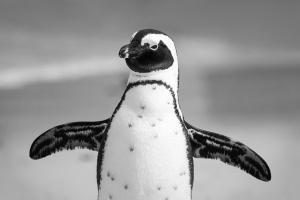Take and Make kits for this project will be available at area PPLD libraries beginning this Friday, Dec. 11, 2020.
Materials in Take and Make:
- Penguin copied on cardstock
- Pipette
- Printed penguins
- Sand
- Plastic egg
Materials from home:
- Crayons
- Water
- Cookie sheet
- Baking pan
- Ice cubes
- Tape
Penguin facts:
- Penguins can’t fly. They use their flippers to help them swim and to propel themselves as they glide on the ice.
- The torpedo shape of a penguin’s body helps it zip through the water at up to 25 mph.
- When it’s in the water, a penguin is usually searching for food. It can hold its breath for about 6 minutes.
- To move quickly across the ice, a penguin glides on its tummy.
- Penguins are warm-blooded. Like whales, they have a layer of blubber (fat) under their skin. Their bodies are covered with a layer of feathers that seal in the warmth.
- Penguins secrete oil from a gland that they rub over their bodies to make them water and windproof. They also huddle together to stay warm.
Experiment 1 – How do penguins stay dry?
Color the large penguin with crayons, pressing firmly. Use the pipette to drop water on it. See how the water rolls off the waxy coating. This works the same way with penguins when they rub oil over their bodies to make them waterproof.
Experiment 2 – How do penguins slide on the ice?
Tape a small penguin to an ice cube. Slide it down a slope. Add sand and see how it changes. Friction changes a penguin’s ability to glide quickly.
Activity – Egg transfer game
See if you can use your feet to transfer an egg to another person. This activity mimics the way that penguins transfer an egg from one parent to the other. Keep your egg safe while you do it!
For more information about penguins, look in the library’s non-fiction section (call number 598.47) or visit PPLD Kids Homework section.



